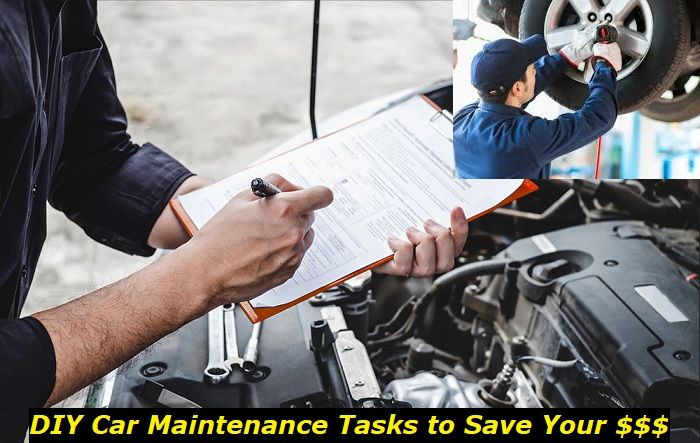Since its inception, the Torqueflite 727 transmission established a solid reputation for its efficiency, strength, and superior performance. It has a proven track record for its ability to hold more power than other transmissions in the market. However, it requires good maintenance and care to increase its durability and counter common problems associated with its good performance.
TorqueFlite 727 automatic transmission highlights
- Average lifespan:350,000-450,000 miles
- Reliability Score:High
- Prone to minor issues:No
- Price for repair after failure:$500-$1,200
- Price for replacement:$2,000-$3,500
- Availability of parts:Good
- Common problems:shifting issues, noisy work, fluid leaks, vibrations.
.jpg)
Common problems of the Torqueflite 727 transmission
Despite glowing recommendations from various car experts, the Torqueflite 727 is not infallible. It is not uncommon to experience the following constraints when using it:
- Irregular or abnormal shifting of the gears
- Transmission fluid leakages
- Uncommon noises
- Overheating
- Wear and tear
- Complete operational failure
You will observe these challenges when the damage is already done, which prompts a reaction to rectify the problem. The reality is that only some of these problems can be caused by the Torqueflite 727. Therefore, you need a mechanism for determining whether or not the problem emanates from the transmission.
That is why the following criteria come in handy to help you diagnose the problem.
How to identify issues associated with the Torqueflite 727 transmission
The first step in identifying a problem with the Torqueflite 727 is knowing where to look. Here are the steps you may want to follow:
1) Check the fluid levels
When checking the fluid level, the engine should be off, but the fluid should be warm or hot. If the dipstick indicates a fluid level that is too low, then the pump can suck in air through the filter causing hydraulic issues. If the level is too high, the spinning parts and gears will whip the fluid into a froth or foam, resulting in more hydraulic problems.
Before checking the fluid level, ensure it is light brown or red. You can put a drop on a white cloth to see the color. If it is dark brown, blackish, or has metal pieces floating on the surface, replace it because the transmission is in trouble.
2) Inspect the shift linkage.
The neutral starting switch should be functional before checking the shift linkage. Set the shifter at "P" (Park) and hit the ignition. If the starter spins over, the TorqueFlite 727 transmission is OK (so far).
Then, move the shifter to "Neutral" (N) and ignite the car. If the starter spins over at that point, know that the shift linkages in transmission are close. When the shifter misses each position, check the link to see if the holes are elongated, pins are worn out, or bushings are shot.
3) Check throttle pressure linkage.
The valve body detects where the throttle body lever or carburetor is with a throttle pressure signal. The signal tells whether the engine is under load, the throttle is wide open, or the driver has stepped off the accelerator.
The linkage sends a signal to the transmission telling it when to shift, how soft or hard, and when to increase the pressure. The shift will only function normally if the throttle pressure linkage is correct. When you observe the latter, safely conclude that the TorqueFlite 727 is at fault.
4) Is there a leak?
Leaks may seem easy to detect, but the source may not necessarily be attributable to the TorqueFlite 727. There are numerous sources of leaks, but fortunately, most don't require the removal of the transmission.
When dealing with leaks, pinpoint the source by cleaning the underside of the car. Then, wash the engine and the floor pan around the transmission. It is now easy to identify the point where the leak is coming from and seal it.
What are the reasons for these failures?
Having determined that the problem is with the Torqueflite 727, you need to know what might have caused it. That will help you explain the issue to the technician with clarity and conviction. You will also know specific spare parts to purchase for the transmission.
Here are the probable causes:
- Too low or too high fluid levels
- Wrong throttle pressure
- Defective engine
- Incorrect shift linkage
- Specification Hydraulic pressures
- Internal hydraulic issues
- Mechanical failures
- Mismatched parts
The best remedy against transmission malfunction is knowing how to prevent it before it occurs. It would be best if you had tips on maintaining and increasing the longevity of the Torqueflite 727 transmission. I have discussed those tips below.
How to improve the durability of the TorqueFlite 727
Torqueflite 727 transmissions are widely regarded as really durable. However, this durability is optional, as it calls upon the user to follow certain guidelines to keep it running smoothly for a long time. These are the guidelines:
1) Frequent engine maintenance
The engine plays a pivotal role in maximizing the performance and efficiency of the transmission. Engine maintenance practices such as tune-ups, oil changes, and filter replacements help the engine to run smoothly. If the engine fails to run correctly, it stresses the transmission causing it to wear out.
2) Proper tire alignment and inflation
Properly aligned and inflated tires reduce transmission stress and help improve fuel efficiency. It is good to follow the recommended towing capacity of your car to keep the tires aligned and maintain the right pressure. Excess weight strains the transmission leading to quick wear and damage.
3) Use high-quality transmission fluid.
A critical factor that helps optimize the durability of the Torqueflite 727 is the use of a specifically-designed transmission fluid for a particular vehicle. The transmission fluid aids in increasing the efficiency and reducing the wear and tear of the tranny.
It is crucial to ensure the fluid is free of contaminants that impede its purity. Impurities reduce the performance and durability of the transmission.
4) Install a transmission cooler.
A transmission cooler on the Torqueflite 727 helps in regulating its temperature. The cooler dissipates heat from the fluid. That prevents damage caused by overheating.
Choosing the correct type and size of the transmission cooler is vital. That helps in creating optimal cooling conditions for the transmission, which in turn increases its longevity.
5) Balance the driveshaft
Vibrations caused by an unbalanced driveshaft lead to wear and tear of bearings and U-joints of the transmission. These vibrations also increase noise and inhibit performance.
A balanced driveshaft helps to distribute weight evenly, which reduces vibrations and improves the overall performance of the transmission. This results in longer component life, smoother operation, and better car performance.
6) Apply appropriate driving techniques.
Driving habits significantly impact the durability and performance of the Torqueflite 727 transmission. Good driving techniques like gradual acceleration avoiding over-revving the engine will reduce stress. That will make the transmission serve you for a longer time.
7) Conduct regular inspections
Periodic assessments of the transmission will enable you to detect potential issues beforehand. Even without the help of a professional, you can check the fuel levels and rough steel plates and inspect the shift linkage. These initial telltale signs will help in making a proper diagnosis of the Torqueflite 727 transmission problems.
In a nutshell
The Torqueflite 727 transmission comes highly recommended for its strength and durability. Despite that, you may encounter several problems when using it, such as fluid leaks, overheating, and shift linkage failure. These should not worry you because their common causes, such as too high or low fluid levels, wrong throttle pressure, and defective engines, are identifiable and correctable.
You can increase the durability of the Torqueflite 727 by installing a transmission cooler, balancing the driveshaft, and conducting frequent inspections. I hope you will not panic or get stranded the next time you experience the above symptoms. Diagnose them and rectify them immediately!
About the authors
The CarAraC research team is composed of seasoned auto mechanics and automotive industry professionals, including individuals with advanced degrees and certifications in their field. Our team members boast prestigious credentials, reflecting their extensive knowledge and skills. These qualifications include: IMI: Institute of the Motor Industry, ASE-Certified Master Automobile Technicians; Coventry University, Graduate of MA in Automotive Journalism; Politecnico di Torino, Italy, MS Automotive Engineering; Ss. Cyril and Methodius University in Skopje, Mechanical University in Skopje; TOC Automotive College; DHA Suffa University, Department of Mechanical Engineering






Add comment